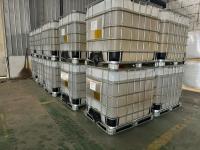Polyamines have important applications in both water treatment and mineral processing due to their unique chemical properties. Here is a detailed overview:
-
Coagulation and Flocculation: In water treatment, polyamines are used as coagulants and flocculants. The high positive charge density of polyamines enables them to effectively neutralize the negative charges on the surface of colloidal particles in water. This neutralization process causes the colloidal particles to aggregate, forming larger flocs. These flocs can then be more easily separated from the water through sedimentation or filtration. As a result, polyamines play a crucial role in removing turbidity, suspended solids, and certain organic pollutants, thereby improving the clarity and quality of water.
-
Heavy Metal Removal: Polyamines are capable of forming stable complexes with heavy metal ions present in wastewater. Toxic heavy metals such as lead, mercury, cadmium, and chromium can be effectively precipitated out of the water as insoluble polyamine - metal complexes. This application is particularly important in treating industrial wastewater, as it helps to reduce the concentration of heavy metals to meet strict environmental discharge standards and prevent water pollution.
-
Sludge Conditioning: In sewage treatment plants, polyamines are used to condition sludge. They interact with the organic matter and fine - grained particles in the sludge, improving its dewaterability. By binding to these components, polyamines make it easier to separate water from the sludge during the dewatering process. This leads to the formation of a drier sludge cake, which is more convenient for disposal and reduces the overall volume of sludge that needs to be treated.
-
Flotation Reagents: Polyamines are valuable flotation reagents in mineral processing. They adsorb onto the surface of specific minerals, altering their surface properties and making them more hydrophobic. This hydrophobicity allows the minerals to attach to air bubbles in the flotation cell, facilitating their separation from the gangue or unwanted materials. For example, in the flotation of sulfide minerals like copper sulfide and zinc sulfide, polyamines can enhance the selectivity and recovery of these valuable minerals.
-
Depressants and Dispersants: Polyamines can also function as depressants or dispersants in mineral processing. As depressants, they prevent the flotation of certain unwanted minerals by adsorbing onto their surfaces and making them hydrophilic. This inhibits their attachment to air bubbles, allowing for the selective flotation of other desired minerals. As dispersants, polyamines are used to prevent the aggregation of fine - grained minerals. By keeping the particles well - dispersed, the efficiency of the separation process is improved, especially in the processing of complex ores where the accurate separation of different minerals is crucial.
-
Ore Beneficiation: Overall, polyamines contribute to the improvement of ore beneficiation processes. They selectively interact with specific minerals, helping to increase the grade and recovery of valuable minerals. This leads to a reduction in the amount of waste material and enhances the economic viability of mining operations. For instance, in the processing of phosphate ores, polyamines can be used to enhance the separation of phosphate minerals from impurities, thereby increasing the purity of the final phosphate product.

